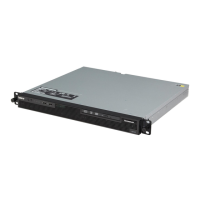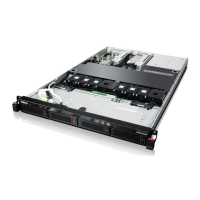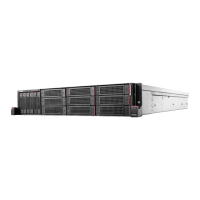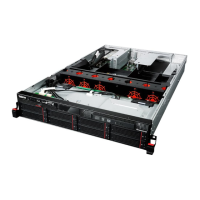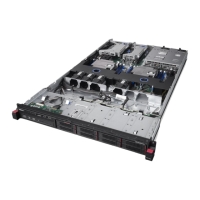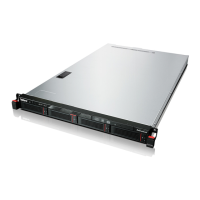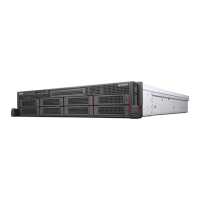– SATA Programming Interface
Select this choice to disable, enable, or configure the Serial ATA.
To comply with the 4690 OS requirement, this option provides a Legacy Only
(4690) mode that you can select from the menu. When you select the Legacy
Only (4690) mode, this enables the SATA 0 through SATA 3 ports for the
4690 OS.
– Planar Ethernet
Select this choice to disable or enable the Ethernet controller on the system
board.
– USB Support
Select this choice to enable or disable the USB support.
– Video
Select this choice to view the video information.
– System MAC Addresses
Select this choice to view the MAC addresses for network devices that are
installed in the server.
v
Date and Time
Select this choice to set the date and time in the server, in 24-hour format
(hour:minute:second).
This choice is on the full Configuration/Setup Utility menu only.
v System Security
Select this choice to set passwords. See “Using passwords” on page 66 for more
information about passwords.
– Administrator Password
This choice is on the full Configuration/Setup Utility menu only.
Select this choice to set or change an administrator password. An
administrator password is intended to be used by a system administrator; it
limits access to the full Configuration/Setup Utility menu. If an administrator
password is set, the full Configuration/Setup Utility menu is available only if
you type the administrator password at the password prompt.
– Power-on Password
Select this choice to set, change, or delete a power-on password.
v Start Options
Select this choice to view or change the start options. Changes in the start
options take effect when you restart the server.
You can enable or disable the hard disk drive self-monitoring, analysis, and
reporting technology (SMART) function.
You can set keyboard operating characteristics, such as the keyboard speed, and
you can specify whether the server starts with the keyboard number lock on or
off.
You can enable a virus-detecting test that checks for changes in the boot record
when the server starts.
– Startup Sequence Options
Select this choice to view the Startup Sequence Options menu. The startup
sequence specifies the order in which the server checks devices to find a boot
record. The server starts from the first boot record that it finds.
v
Advanced Setup
Select this choice to change values for advanced hardware features, such as
CPU options and PCI configuration.
Chapter 3. Configuring the server 63
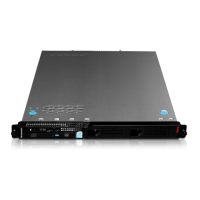
